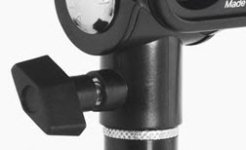Kias...I'd listen to what Robert has to say. He knows what he's talking about. And I totally agree with him about Cowboy Studios stuff. I've heard nothing but horror stories about that company and their gear.
I definitely listen to what he says. I've thoroughly cyber-stalked his websites and posts here and hold his critiques and help way up there on the 'who to listen to' scale. I took all of his suggestions, and everyone else's on this thread and came up with much better photos the next time I tried! For that, I thank all of you!
Robert,
I have to explain myself a little better I think. When you walk into my lab at work, there's a huge sign that says, "All warranties will be voided in this room!" Yeah, I'm that guy. My $600 cell phone? The warranty was voided within 10 minutes of pulling it out of the box. When the USB port went bad in it a few months ago, I just ordered an $18.00 usb circuit board from Hong Kong, took the phone apart and put the new one in. Good as new. Total time: 15 mins. Would've been free under warranty had I not voided it. Not to mention two weeks without the phone. It would've been $200 to send it to someone to fix and still two weeks. It's just what I do, and I actually have fun fixing stuff! Warranties and customer service is something I
rarely use.
Now, on the flip side of that. I don't like buying crap to start with. So... If cowboy has crap, I'm avoiding it. It's that simple. It was just something I was looking at.
My budget will probably be something like $500 to $1000, so if you point me in the right direction I would much appreciate it, as I'm in an unknown land right now. I think I want a backdrop of some sorts or two, and the basic three light setup. I think...
I'm also thinking I may want to head in the direction of flash, as opposed to the continuous lighting I was thinking about, as I really enjoy taking photos of fast moving objects, like water drops and such also.
So lost here. But I do over-research everything before I buy it. So I'm probably several months before I put my final decision in. Just starting my OCD research now.
Thanks!


